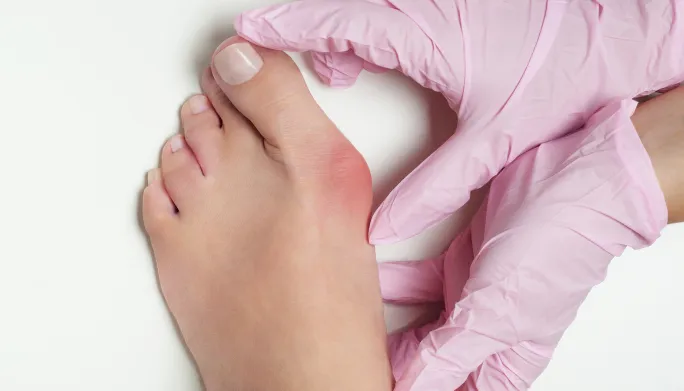
What is a bunion?
In medical terms, a bunion, or hallux valgus, is a bony bump that forms around the joint at the base of your big toe. This joint is one of the most important parts of your foot, bearing most of your body weight. The bony bump is caused by the head of the first metatarsal bone (the long bone) behind the big toe angling out from the foot. This causes the joint to swell, pushing the big toe in towards the adjacent toes. The result is pain on the side of your foot, arch pain, and discomfort throughout the adjacent toes as well.
What causes a bunion?
Bunions have a number of causes, primarily genetics and bad choices in footwear. We inherit traits like flat feet, abnormal bone structure, and loose ligaments and tendons from our parents. When our feet are weakened by these traits and we stuff them into high heels or shoes which don’t support our feet correctly, the repeated stress on the front of the foot may contribute to the formation of a bunion. Other contributing factors are jobs that demand a lot of time standing, obesity, and sudden hormonal changes and weight gain, as in pregnancy.
Unfortunately, bunions can lead to many other foot conditions as well. The joint behind the big toe carries much of your body weight and when the bunion makes it sore, you shift your weight onto other areas of the foot. That’s why we frequently see crossover toes, overlapping toes, hammer toes, corns, calluses, and ingrown toenails accompanying bunions. As pain in your foot increases, you’ll also reduce your activity, becoming more sedentary, which has its own quality-of-life issues.
What are the symptoms of bunions?
Considering bunion surgery? Learn if you’re a candidiate for FastForward, a corrective bunion procedure which offers minimal surgical intervention.
- A bump at the base of your big toe
- Pain, swelling, soreness, redness around the area of the big toe joint
- Big toe pointing towards adjacent toes
- Difficulty moving your big toe
- Corns or calluses where the 1st and 2nd toes overlap
- Pain when walking, created by your shoe rubbing on the protruding area
Treatment options for bunions
The non-invasive treatments for bunions are many and include changes in footwear, icing the sore area, over the counter pain medications, orthotic shoe inserts, and weight management. If these conservative measures fail to arrest your pain and discomfort, your foot and ankle surgeon may recommend a bunionectomy or similar surgical procedure, depending on your condition.
See our page on bunion symptoms, treatment, and surgery for detailed information.
